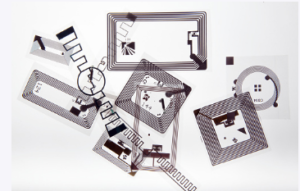Are You Shopping for an Arduino RFID Reader for Your Business? Getting the Right One
Warehouse tracking technology can reduce errors and costs when used to track inventory, products, or equipment in a warehouse. It can also be used for tracking assets like test equipment, computer tech and field vehicles.
 Improved accuracy
Improved accuracy
https://ramprfid.com.au RFID readers use radio waves to activate transponders and provide data. Like barcode scanners, they can scan multiple tags simultaneously without requiring a direct line of sight.
Before choosing a reader, consider its intended environment and sensitivity settings. A higher sensitivity allows it to detect fainter signals for improved accuracy and reading range; additionally, shorter cables help maximise signal delivery to antennas by increasing signal strength and decreasing signal loss.
Increased efficiency
RFID technology simplifies staff’s lives by collecting more data automatically, freeing them up for more productive tasks, and lowering labour costs.
RFID tags can be read from much greater distances than standard barcode labels, making scanning items from 75 feet away or further without line-of-sight easier for shelves, backrooms and anywhere else in a facility.
RFID can also help improve efficiency by identifying products requiring special handling, such as medical or food items. It enables better tracking and inventory control and prevents misplaced or lost items.
RFID can also help retailers track product locations on shelves so they know when customers require items they have placed there. This feature is especially valuable to retailers seeking to minimise out-of-stock situations and gain real-time visibility into their supply chains while simultaneously combatting shrinkage through accurate stock counts. To make RFID work for you most effectively, opt for systems featuring larger antennas capable of reading from further distances and circular polarisation for maximum effectiveness.
Reduced labour costs
Implementing an RFID system into retail business operations allows employees to focus on other important tasks more easily. This technology automates inventory check-in and counting processes, shipment verification and other critical operations processes – saving valuable human resources while speeding up operations significantly. Adding RFID can also help control shrinkage and reduce lost or stolen goods, providing businesses with valuable human capital and protecting valuable goods from being lost or stolen.
Healthcare organisations also can benefit from using RFID technology. It enables them to comply with OSHA reporting and FDA medical device reporting requirements for adverse events. Unfortunately, however, RFID tags may pose privacy issues due to the potential for their unauthorised collection, misuse, or disclosure (Yao, Chao-Hsien and Li, 2012).
Implementation and maintenance costs associated with https://ramprfid.com.au RFID reader systems present another obstacle. Specialised readers and antennas must be tuned correctly to read tag information accurately. RFID readers must be connected to a network and the software configured accordingly; connectivity tests should also be run, along with networking details. Furthermore, existing auto-check and self-check systems must be modified to support RFID, adding significant costs. But the benefits of modern RFID solutions go well beyond these gains in inventory accuracy, including up to 25.0 percent increases in full-price sell-through and reduced stockouts, along with 10.0-15.0 percent decreases in labour hours related to inventory that could boost revenue by as much as 1.5 percent.
Increased customer satisfaction
Tracking items without a direct line of sight simplifies employees’ jobs, freeing them up for more important tasks and increasing customer satisfaction. A self-checkout system that enables customers to scan and pay for purchases may shorten wait times while building customer loyalty.
RFID allows businesses to automatically collect real-time data in challenging environments where standard barcode labels cannot, such as extreme temperatures and harsh chemicals. This data can help improve inventory management, streamline supply chain operations and limit shrinkage.
An RFID reader can read multiple tags simultaneously without needing a direct line of sight, using wireless technology that sends signals when tags come within its radiation range. Once inside, these signals activate and transmit all stored information about them back to the reader – it also records when it comes into contact with tagged items, so the reader displays this data on its screen.
https://ramprfid.com.au RFID readers allow retailers to tailor store layout and merchandising strategies specifically to the behaviour patterns of their customers. For example, retailers could use this technology to display product-specific info when customers pick up items from shelves, helping them make faster, more informed purchasing decisions.